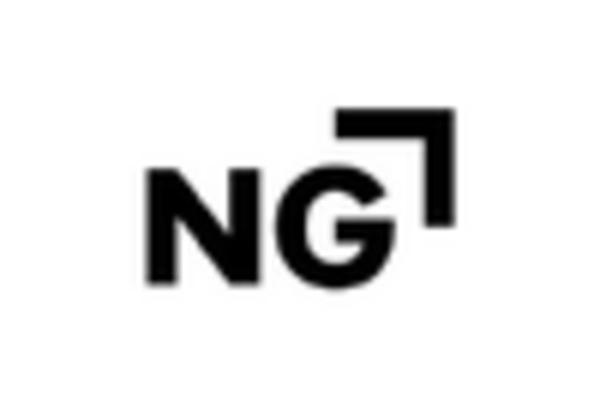The unmanned composites market is characterized by a dynamic competitive landscape, driven by advancements in technology and increasing demand for unmanned systems across various sectors, including defense, aerospace, and commercial applications. Key players such as Northrop Grumman (US), Lockheed Martin (US), and Boeing (US) are at the forefront, focusing on innovation and strategic partnerships to enhance their market positions. Northrop Grumman (US) emphasizes the integration of advanced materials in its unmanned systems, while Lockheed Martin (US) is actively pursuing collaborations to expand its capabilities in autonomous technologies. Boeing (US) is leveraging its extensive experience in aerospace to develop next-generation unmanned vehicles, thereby shaping a competitive environment that prioritizes technological advancement and operational efficiency.
In terms of business tactics, companies are increasingly localizing manufacturing to reduce costs and enhance supply chain resilience. The market structure appears moderately fragmented, with several key players exerting considerable influence. This fragmentation allows for a diverse range of offerings, yet the collective strategies of major companies create a competitive atmosphere where innovation and operational excellence are paramount.
In October 2025, Northrop Grumman (US) announced a partnership with a leading materials science firm to develop next-generation composite materials for unmanned aerial vehicles (UAVs). This strategic move is likely to enhance the performance and durability of their UAVs, positioning Northrop Grumman (US) as a leader in advanced materials technology within the unmanned composites sector. The collaboration underscores the importance of innovation in maintaining competitive advantage.
In September 2025, Lockheed Martin (US) unveiled a new initiative aimed at integrating artificial intelligence (AI) into its unmanned systems. This initiative is expected to improve operational efficiency and decision-making capabilities, reflecting a broader trend towards digital transformation in the industry. By harnessing AI, Lockheed Martin (US) aims to enhance the effectiveness of its unmanned platforms, thereby solidifying its market position.
In August 2025, Boeing (US) secured a contract with the US Department of Defense to supply advanced unmanned systems utilizing cutting-edge composite materials. This contract not only reinforces Boeing's commitment to innovation but also highlights the growing reliance on unmanned technologies in defense applications. The strategic importance of this contract lies in its potential to drive revenue growth and enhance Boeing's reputation as a key player in the unmanned composites market.
As of November 2025, current trends in the unmanned composites market are increasingly defined by digitalization, sustainability, and the integration of AI technologies. Strategic alliances among key players are shaping the competitive landscape, fostering innovation and collaboration. Looking ahead, it appears that competitive differentiation will evolve from traditional price-based competition to a focus on technological innovation, supply chain reliability, and sustainable practices. This shift may redefine market dynamics, compelling companies to invest in R&D and strategic partnerships to maintain their competitive edge.

















Leave a Comment